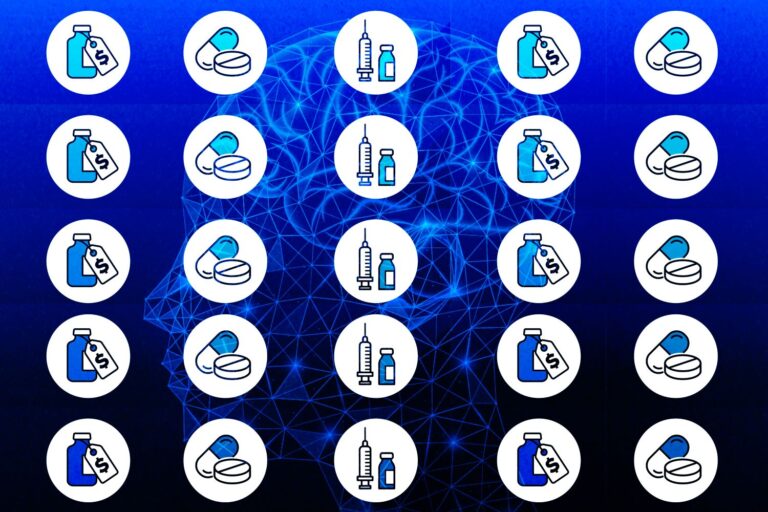How Butterfly Network Has Grown into an Innovation Empire Rebuilding Ultrasound
From underserved communities within America to remote areas of Africa, up to 4.7 billion people globally lack access to medical imaging. This hard truth has sparked several health-tech innovators, including the game-changer Butterfly Network – which leverages ultrasound technology to formulate the world’s first hand-held whole-body imager.
Founded in 2011 by visionary innovator Jonathan Rothberg, the Guilford-base behemoth has been world-renowned as the pioneer in the emerging field of semiconductor-based point-of-care ultrasound (“POCUS”) devices and related imaging and workflow software, breaking through the barriers of conventional ultrasound systems as well as bringing immense opportunities to improve healthcare access and delivery.
“Our mission is to democratize healthcare by making medical imaging accessible to everyone around the world,” stated Founder Jonathan Rothberg. Let’s read on to see how Butterfly Network has delivered such a mission.
Adopting Ultrasound, an Innovation Empire Was Established in Guilford

A Brief Overview of the Traditional Ultrasound Sphere
Before the advent of Butterfly Network, ultrasound usage within healthcare landscape had been constrained by high upfront system cost, limited access, and suboptimal convenience.
Particularly, the global ultrasound market was dominated by old-fashioned cart-based devices that were accessible only to highly specialized technicians and were located predominantly in large-scaled hospitals, imaging centers, and physicians’ offices. In fact, previously introduced POCUS devices were limited by 60-year-old technology and significant costs that hindered widespread use.
Given that, Butterfly iQ by Butterfly Network is designed to address the limitations of currently available cart-based and POCUS technologies.
How the World’s First Handheld, Single-Probe Whole-Body Ultrasound System Was Created
Nonetheless, the journey to successfully invent Butterfly iQ – and reinvent the healthcare sphere – is never a straightforward one.
A few years ago, a group of biomedical engineers walked out of the Guilford laboratory where they had tried and failed for four years to create a tech breakthrough: fit all the technology of diagnostic ultrasound on a chip. Frustrated and defeated, those biomedical engineers thought that they would stage a coup — at least that’s how it looked to their boss, Jonathan Rothberg, whom they approached in the little, waterfront cafe next to his company, Butterfly Network.
Yet, when they told him it could not be done, that all the technology of a device that looks inside the human body could not be contained in a microchip, it did not take Rothberg much thought to say “No.” It wasn’t hard for Rothberg just because he wasn’t thinking about failure or losing money or disappointing investors. Instead, he was solely focusing on his goal: rebuilding ultrasound technology from the ground up, and making it smart, simple and cheap enough to place in the hands of millions of people.
“Of course, you fail,” he says. “You get up. That’s the key: You get up more times than you fall down.”
As a distinguished scientist and serial biotechnology entrepreneur, Jonathan Rothberg had previously led two companies, resulting in President Obama presenting him with the National Medal of Technology and Innovation for his “pioneering inventions and commercialization of next-generation DNA sequencing technologies, making access to genomic information easier, faster and more cost-effective for researchers around the world.”
His motivation to move on from DNA sequencing to ultrasound came from his daughter who suffers from tuberosclerosis (TSC), which leads patients to develop tumors throughout their bodies and requires multiple ultrasound scans. Through the first-hand experience of her medical care, Rothberg’s lightbulb moment came whilst pondering the inefficiency of her treatment and the unwieldiness of the equipment. His previous working experience with semi-conductors certainly helped.
Despite all technical challenges, they ultimately succeeded, and have started the work of spreading their innovations beyond the hands of the well-funded few and into those who couldn’t otherwise afford it.

Actually, Butterfly’s portable ultrasound device was first adopted in rural, resource-strapped hospitals in Kenya, an East African country, where imaging intensive-care patients typically mean disconnecting them from oxygen to move them through the hospital.
How Butterfly IQ Is Particularly Different from Other Ultrasound-Based Devices
For decades, ultrasound technology has been based on the same essential hardware. Ultrasound waves are bounced off tissues in the body and converted into electrical signals by small crystals, which all take place in a handheld probe attached to the ultrasound machine. Predictably, numerous sized probes then tackle various age groups and/or parts of the body, yet herein lies the hardware innovation which Butterfly Network calls their full-stack imaging solution.

Rather than scaling down the traditional machines, the Guilford-based company has discovered a novel way to integrate ultrasound with a semiconductor chip, replacing crystal transducers with a microchip equipped with 9,000 metal transducers – each smaller than the tip of a human hair. Accordingly, they have been able to develop a device that requires only a single probe usable on the whole body that connects to a smartphone.
“There’s true magic on this chip,” transducer team lead Jaime Zahorian stated.
Their application then allows users to capture images, pull patient information, send scans to their secure Butterfly Cloud and even send to a picture archiving and communications system (PACS), the radiology software system adopted by many healthcare organizations.
“If you’ve ever had an ultrasound scan, you know it involves big, expensive machines. New high-end scanners, like the ones in maternity hospitals, can cost $350,000 per piece. And doctors charge a couple hundred bucks to perform an ultrasound”, stated Stephen McBride, Chief Analyst at RiskHedge. “Little-known disruptor Butterfly Networks is turning this $8 billion market on its head. The firm invented a “beard shaver” shaped instrument that transforms any smartphone into the handheld ultrasound machine: You simply plug it into a lightning port for iPhone or a USB-C for Android, open Butterfly’s app, and you’re ready to perform an ultrasound.”
Medical Practitioners’ Standpoints: How This Device Has Reimaged the U.S. Healthcare Landscape in Reality
Since the commercial introduction of Butterfly iQ in 2018 – and that of Butterfly iQ+ with additional features and improved performance two years later, these devices have seen high adoption rate by thousands of physicians, emergency medical technicians (EMTs), physician assistants, nurses and other practitioners in the U.S. With the FDA approval and CE marking for ultrasound transducer by Butterfly Network, these devices are commercially available for users outside of the nation.
From the perspective of Dr. John Martin, Chief Medical Officer at Butterfly Network, the USPs of Butterfly iQ and Butterfly iQ+ lie at their “affordability, portability and versatility”, on which several clinicians in various specialties agree. Priced at $1,999, Butterfly iQ+ undercuts the devices currently available, which fall into a few tiers.

When it comes to the versatility of its applications, the ability to be carried in a physician’s pocket, together with its software component leading to efficiency and productivity gains, is particularly welcomed.
“I’ve been able to carry it around in my pocket on call and it’s now become part of my ward round. Rather than listen to children’s chests, I’m actually looking at them with ultrasound. Interestingly, I’ve noticed a difference in parents’ interactions with me too,” shared Dr. Michael Griksaitis, a consultant pediatric intensivist and clinical lead for the Southampton Oxford Retrieval Team (SORT) at Southampton Children’s Hospital, stressing the benefits of the extra portability.
By adopting the Butterfly app to choose the type of scan being conducted, machine settings are automatically set straight away and once finished, the results can be shared for educational, referral or discussion purposes. Plus, the software can guide users to a better image and measure a variety of parameters in view, with much more functionality planned for the future.
Butterfly iQ+ is well considered “an excellent technology for diagnosing point of care conditions,” remarked Dr. Cian McDermott, a consultant in Emergency Medicine and co-director of Emergency Ultrasound Education at the Mater Hospital in Dublin, Ireland.
“When I’m using the Butterfly device, I’m not trying to replace what the radiologists are doing. This is very different. If I have a hypotensive patient and I want to quickly check their left ventricular function to see if there’s a tamponade, pleural effusion or pneumonia, I can do that at the point of care and I don’t then need to send the patient to radiology to get an answer,” he explained.

“The device arrived and a few things impressed me straight away. Little things, like a specific preset for pediatric patients. The fact that you can plug it in and within seconds you get the images. The fact that you don’t need to put in patient details upfront (if you go to cardiac arrest, the last thing you want to be doing is putting in patients’ details), whereas you could scan and then put the patient details afterward,” also noted Dr. Michael Griksaitis. “I was concerned that the probe was too large, but I’ve now used it on children ranging from 1kg to 100kg and it is truly excellent.”
Notably, the critical role of Butterfly iQ+ as a medical imaging innovator has been well exhibited amidst the COVID-19 battle.
“For decades, the mental image of a doctor has been someone with a stethoscope around their neck. Going forward, this revolutionary portable ultrasound device may be just as critical for the medical professional,” said Dr. Rasu Shrestha, executive vice president, and chief strategy and transformation officer at Atrium Health. “The Butterfly iQ devices have already given Atrium Health greater abilities in screening and monitoring COVID-19 patients by providing an immediate and clear picture of what’s happening in a patient’s lungs. But we see its benefit going well beyond the current pandemic. Our teams are already using it to provide care for heart patients, and we anticipate this device ushering in a new era of frontline care.”
In practice, Atrium Health has deployed a large fleet of Butterfly iQ devices which have already been leveraged to perform thousands of scans under an agreement with Butterfly Network. The devices are active at more than 30 high-priority locations, such as COVID-19 testing centers, emergency departments, intensive care units, and Atrium Health’s Sanger Heart & Vascular Institute. Butterfly iQ runs on a software platform designed to simplify the ultrasound workflow and works directly within existing systems while staying secure with cloud-based security tools.
“Point-of-care ultrasound has played an important role in helping health systems respond to the COVID-19 pandemic around the world. We have seen it used to assess initial lung and cardiac involvement, as well as to monitor disease progression for patients isolated in urgent care facilities, quarantined in the home or even in Atrium Health’s COVID-19 Virtual Hospital,” commented Dr. John Martin, Butterfly’s chief medical officer. “The value of the Butterfly iQ extends well beyond this particular pandemic. Its ability to streamline workflow and provide clinicians important tools they need to help patients, right at their fingertips, is changing the future of medical imaging forever.”

Challenges Remain…
What should be noted is that, whereas senior physicians comfortable with POCUS in such specialties as respiratory and cardiology could adopt the device in their clinics, POCUS is undoubtedly a special skill that only certain physicians are academically educated. Hence, a culture shift to embrace POCUS will need to accompany the adoption of the Butterfly iQ/ Butterfly iQ+ device if it is to optimize its potential and deliver sales at huge scale.
As Dr. Hugh Harvey, radiologist and healthtech startup advisor, puts it, “It takes 5+ years to train in ultrasound and the Royal College of Radiologists doesn’t recommend POCUS unless in explicit emergent situations. Of course, it will feel like POCUS is making a difference in time-critical situations, but I don’t see it replacing traumogram CT which is almost totally ubiquitous right now. The catch will be in proving the health economics of it. I’m not yet convinced the instances that it is useful will outweigh the increase in false findings downstream.”
As Dr Harvey pointed out, health economics does perform a remarkable role; thereby, it’s a “must” that those who leverage Butterfly innovations and wish to follow the POCUS field beyond the more obvious emergency and educational use cases carefully evaluate and transparently share these results.
Whilst the potential benefits of bringing ultrasound to routine examination of patients – which seems to be the eventual goal – are undeniable, it’s essential to note that such a large-scale shit within such a pivotal sector as healthcare will not be easy nor fast.
Besides, Dr. Ravindran Karthigan, a radiologist at Guys and St Thomas’ NHS Foundation Trust, warns that an increase in POCUS scanning could result in more work for those dealing with subsequent referrals, emphasizing that “the number of imaging requests that I have received for incidental, potential pathology picked up whilst the ED team has performed POCUS has risen and the majority of these referrals have no clinical significance.”
“I feel that the Butterfly iQ would be best placed on the crash trolley on the ward and to be used when a cardiac arrest is taking place. Dragging a cumbersome machine into an already crowded room of healthcare workers is difficult and not often done,” he added.
By and large, radiologists set high standards when it comes to image quality and in healthcare, there always seems to be inertia against technology that feels “too good be true”, particularly when handling with clinicians who are trained to resolve problems and often very familiar with complicated systems and workarounds. That being said, Dr. Karthigan does appreciate how the Butterfly device could be an outstanding step towards a positive change in future healthcare practice, describing it as “a fantastic start to the future of portable ultrasound devices.”
“The Butterfly iQ is a great concept and opens doors in aiding physicians to make more informed diagnoses and decisions, but we will need to see a huge increase in those training in the art of POCUS,” commented Dr. Karthigan.
After all, while it’s apparent that the clinical care sphere could not be transformed overnight, there is every possibility that Butterfly Network can make a significant difference someday in the future, especially when they do recognize the incumbent challenges and are ready to work with health systems to train physicians within the POCUS field.

The Bottom Line
With a breakthrough technology putting ultrasound on a semiconductor chip, Butterfly Network has undoubtedly disrupted a large and expanding addressable ultrasound market. Though there exist challenges along the path to revolutionizing clinical care, the prospect of this Guilford-based behemoth is promising – and so is the future of American healthcare.









